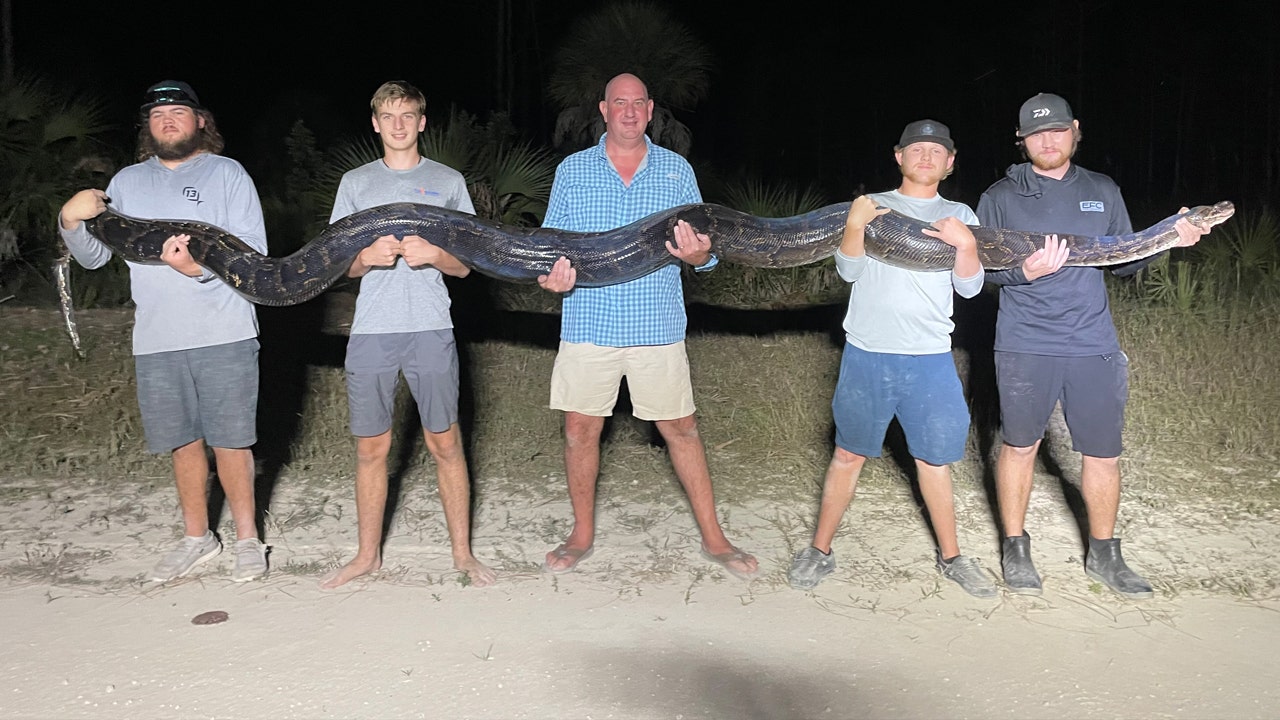Discovering The Giant: The 198 Lb Burmese Python's Significance
Is the size of a snake just a number? Not when it's a Burmese python tipping the scales at 198 pounds, because such a specimen isn't just a snake; it's a window into an entire ecosystem.
Encountering a Burmese python of that magnitude signifies more than just a large reptile. A 198-pound specimen is an embodiment of successful growth, reflecting a maturity that suggests a pivotal role in its environment. Herpetologists and conservationists recognize such individuals as invaluable sources of data, offering critical insights into the species' development patterns, overall health, and reproductive capabilities, whether in their natural habitats or within the controlled settings of captivity.
The implications extend beyond the individual snake. These titans of their species are crucial touchstones for researchers investigating the broader Burmese python population. Precise measurementsweight, length, girth, and scale patternscontribute to a richer understanding of the complex factors that govern the species' population dynamics. The data gleaned from these studies isn't merely academic; it directly informs conservation strategies, enabling more effective management and protection of these animals. The sheer mass of a 198-pound python serves as a stark reminder of the need for continued, rigorous study, especially given the potential ecological repercussions of their presence.
- Exploring The Megnut Fanbus What It Is Why Fans Love It
- Breaking Down Who Is Sneako The Truth Revealed
As we move forward, let's consider deeper into the natural world. An individual analysis of a snake, like the 198-pound one, could reveal insights into its environment and its health conditions, in order to develop better conservation strategies for it and other of its kind.
| Burmese Python - Specimen Data | |
|---|---|
| Common Name | Burmese Python |
| Scientific Name | Python bivittatus |
| Specimen Weight | 198 pounds (approximately 89.8 kg) |
| Estimated Age | Mature adult (estimated 8-15+ years, based on size) |
| Typical Diet | Carnivorous: Primarily rodents, birds, and small mammals. Larger specimens may consume larger prey, like deer or feral hogs. |
| Habitat | Native to Southeast Asia (e.g., Myanmar, Thailand, Vietnam). Invasive in parts of North America, such as Florida Everglades. |
| Conservation Status | Vulnerable (IUCN Red List). Invasive populations are subject to control measures. |
| Key Threats | Habitat loss and fragmentation, hunting (for skin and traditional medicine), and invasive status in certain regions (causing ecological imbalance). |
| Ecological Role | Apex predator: Helps regulate populations of prey species. In invasive ranges, can disrupt native ecosystems. |
| Research Significance | Provides data on growth rates, dietary habits, physiological adaptations, and impacts on native ecosystems. Important for developing targeted conservation strategies. |
| Reference | National Geographic - Burmese Python |
- Is Sam Hartman Married Unveiling Sam Hartmans Wife Status 2023
- Explore Edward Furlongs Life From Terminator Star To Today

Florida men capture massive 17foot, 200pound invasive python in
:max_bytes(150000):strip_icc():focal(749x0:751x2)/burmese-python-tout-110823-3658378bb32e4e10bb679c2c48eb9050.jpg)
Gigantic 198 Lb Burmese Python Discovered, Leaving Experts Astounded

Massive 198 Lb Burmese Python Captured